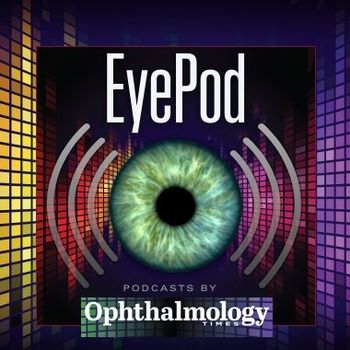
Study examines imaging fibrous structure abnormalities of the sclera in myopathic patients
A team of researchers are unraveling the mysteries of ocular pathologies by visualizing the fiber structure of the sclera, the outermost eye layer.
Diseases of the eye are prevalent worldwide, with recent estimates indicating that 33% of the global population suffers with at least some level of visual impairment. Amid the complexity of the human eye, the nature of many eye diseases remain a mystery, and patients are left with a limited range of diagnostic and treatment paths.
In a study published recently in JAMA Ophthalmology, a team of researchers from Tokyo Medical and Dental University (TMDU) in Japan have pioneered the use of a novel kind of
According to a TMDU news release, the drive behind the research stems from the limited options currently available to ophthalmologists for investigating the finer details of the sclera in living patients and specimens.2
“The sclera, composed of collagen fibers, plays an important role in protecting the retina, optic nerve, and other nerve tissues in the eye. Therefore, abnormalities in the shape of the sclera can cause various complications leading to blindness,” lead author Kyoko Ohno-Matsui, MD, PhD, explained in the news release. “Until now, however, the sclera of live subjects has only been measured in terms of its thickness, with no way to obtain details such as the orientation of the collagen fibers over a wide area of the eye.”
In an effort to clear this hurdle, the researchers developed a setup to conduct polarization-sensitive OCT (PS-OCT), a technique where the polarization of light acts as a contrast mechanism.
Senior author Tae Igarashi-Yokoi, MD, PhD, explained in the news release the sclera has a property called birefringence, which is an optical property of materials in which the refractive index depends on polarization.
“Birefringence is typically observed in fibrous tissues that have periodically organized nanostructures, such as the sclera,” Igarashi-Yokoi said in the release. “Thus, in addition to the magnitude of birefringence, which gives us information about the density of fibers, PS-OCT can also show the axis of orientation of the birefringence, which is related to the orientation of the fiber bundles themselves.”
Researchers using this technique examined the properties of the collagen fibers in the sclera of patients with highly myopic eyes. They also focused on the link between myopathy and a sometimes-pathological condition known as dome-shaped macula (DSM), in which a specialized area in the retina bulges outwards. Their analysis included 89 highly myopic eyes from a total of 72 patients, mostly adults more than 50 years old.1
According to the study, this case series included patients with highly myopic eyes (defined as a refractive error ≥ 6 diopters or an axial length ≥ 26.5 mm) with and without a DSM examined at a single site in May and June 2019. The researchers conducted the analysis from September 2019 to October 2023.1
The researchers noted that of the 89 highly myopic eyes that were examined (mean [SD] axial length, 30.4 [1.7] mm), 52 (58.4%) did not have a DSM and 37 (41.6%) had a DSM (10 bidirectional [27.0%] and 27 horizontal [73.0%]).
Moreover, the researchers noted that among the 52 eyes without DSM, the 13 eyes with simple high myopia had primarily inner sclera visible, displaying radially oriented fibers in optic axis images. In contrast, the entire thickness of the sclera was visible in 39 eyes with pathologic myopia. In these eyes, the optic axis images showed vertically oriented fibers within the outer sclera.
Further, the researchers pointed out in the study that eyes presenting with both horizontal and bidirectional DSMs had clusters of fibers with low birefringence at the site of the DSM. In the optic axis images, horizontally or obliquely oriented scleral fibers were aggregated in the inner layer at the DSM.1
“The vertical fibers located posterior to the inner fiber aggregation were not thickened and appeared thin compared with the surrounding areas,” the researchers wrote.
The researchers studied the acquired PS-OCT images and found that the sclera is divided into inner and outer layers with different structural arrangement for each. In the inner layer, the fibers extend radially from the periphery of the optic nerve. In contrast, fibers in the outer layer run perpendicularly to those of the inner layer. Interestingly, in patients with DSM, the fibers of the inner layer were aggregated and thickened, whereas those of the outer layer were compressed and thinned.1
According to the study, the successful use of PS-OCT to visualize the organization of fibrous tissue in eye structures could have huge implications for clinical research, diagnostics, and therapeutics.
“Given the common occurrence of scleral pathologies, such as DSM and staphylomas in eyes with myopia, recognizing fiber patterns could provide important insights that may be relevant to developing targeted therapies to address scleral abnormalities early and mitigate potential damage to the overlying neural tissue,” senior author Masahiro Yamanari, PhD, concluded in the news release.
The researchers further concluded that they are hopeful that PS-OCT could result in impactful medical discoveries that will enable more people to protect their vision.
References:
1. Ohno-Matsui K, Igarashi-Yokoi T, Azuma T, et al. Polarization-Sensitive OCT Imaging of Scleral Abnormalities in Eyes With High Myopia and Dome-Shaped Macula. JAMA Ophthalmol. 2024;142(4):310–319. doi:10.1001/jamaophthalmol.2024.0002
2. Imaging fibrous structure abnormalities of the white of the eye in myopathic patients. EurekAlert! Accessed May 22, 2024. https://www.eurekalert.org/news-releases/1044721
Newsletter
Don’t miss out—get Ophthalmology Times updates on the latest clinical advancements and expert interviews, straight to your inbox.













































